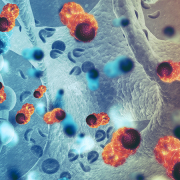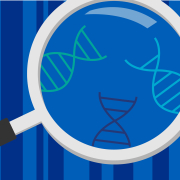The power of three: The importance of trios in diagnosing disease
Trio testing can help clinicians deliver a diagnosis at a much higher rate than testing just the patient alone, as research shows – but what is a ‘trio’?
Children with rare disease are much more likely to receive a diagnosis after their genome or exome is sequenced alongside their parents’, research published last week in The New England Journal of Medicine showed. The results of a so-called ‘trio test’, requestable via the NHS Genomic Medicine Service, can help clinicians pinpoint which genetic variants are more likely the cause of the rare disease, and which variants are not.
If you examine anybody’s genome, you would find a few genetic variants not commonly found in the general population. The majority are harmless, contributing to natural human genetic variation. Pathogenic variants, however, cause or contribute to disease.
For a patient with a suspected rare disease, one increasingly common test is to have their genome or exome sequenced. However, it can be hard to spot the variants contributing to the condition among all the others. This is where trio testing comes in.
What is trio testing?
Trio testing is when the patient’s genome or exome is compared with sequences obtained from both of their biological parents. This is because if neither parent has their child’s disease, it can be reasonably assumed that the variants found in the parents’ genomes are not the cause of their child’s condition.
This data is valuable to bioinformaticians, who can use it to reduce the number of possibly pathogenic variants under consideration. In turn, this increases the chance of correctly finding the one responsible. For patients and their families, on the extremely challenging diagnostic odyssey, this may be the relief they need.
Where trios are useful and where they aren’t
Trios are mostly useful in agnostic testing approaches (for example, the analysis of whole genome or exome sequences) because they can help rule variants in or out of the clinical picture, and identify unexpected inheritance such as pairs of rare recessive alleles or de novo variants. Trios give no benefit when testing for specific variants, since those variants are either present or not.
Cancer genomic testing, with the exception of some heritable cancer syndromes, doesn’t use trios. This is because a cancer tends to result from DNA mutations which occur over the course of a person’s lifetime. Interestingly, the cancer’s genome can be compared to the patient’s own genome, from their healthy cells.
- Further learning: Cancer genomics and healthcare
Increasing diagnoses through trio testing
The value of trio-based testing is clear; many genetic changes are able to be ruled out by comparing the patient’s sequence with their parents’.
Children who underwent family trio analysis were almost five times as likely to receive a diagnosis than those for who neither parent took part, researchers showed in last week’s Deciphering Developmental Disorders study. For children who were part of trios, on average, one candidate variant was reported to the child’s clinical team. Having only one reported variant meant that there was a good chance that it was causative. In contrast, for children whose exomes were tested and analysed alone (called a singleton), 2.5 variants were reported on average.
The pilot of the 100,000 Genomes Project had also shown similar results, with patients recruited as part of trios being the most likely to receive a diagnosis.
Ordering a trio test in the NHS
The NHS Genomic Medicine Service advises the use of trios in several tests listed in the National Genomic Test Directory. In particular when the test uses whole genome sequencing (WGS) which is used for a wide variety of child-onset conditions. And especially where targeted tests or microarrays have not provided a diagnosis.
Clinicians looking to order a trio test are advised to consult the directory before completing a test order form, which can be found on their local Genomic Laboratory Hub (GLH) website.
- Resource for clinicians: How to complete a NHS test order form for WGS









